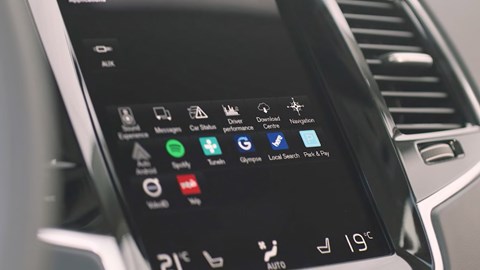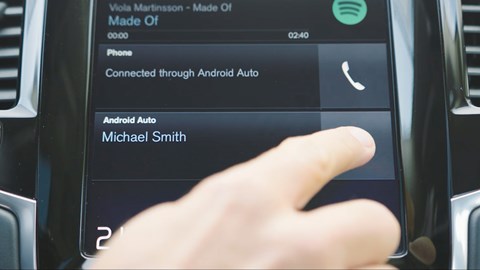► Android Auto explained
► How it works, what it costs
► Simple way to sync Google phones
In the past five years, car manufacturers have been promising an infotainment system that’s intuitive, quick and simple to use – and although they have got better, nothing ever really beats your smartphone, does it? Android or Apple, your smartphone contains everything you need, and when combined with its daily familiarity, no wonder it’s a bit jarring to use anything else. But now there’s a solution when you want to sync your digital life to your car.
If you’re an Apple iPhone user, you can bring your smartphone experience to your dashboard with the CarPlay system, and we’ve written more about that here. If, however, you’re an Android user, and want to experience something very similar to your Google phone in your car, there’s now Android Auto too.

What is Android Auto?
Just like Apple CarPlay, Android Auto aims to bring the entire Google phone experience to your dashboard. When connected to Android Auto, your infotainment screen should mirror that of your phone – just in a landscape, not portrait, style. Google has optimised just what is shown from your phone to make it easier to use.
Got an iPhone? Read our Apple CarPlay guide here
For example, the Android Auto homescreen displays notification cards, displayed when the system thinks it may be useful. And certain apps such as maps, communication, music and voice control are also integrated into the car more than you’d think. For example, voice recognition functions are baked into every screen on Android Auto, while virtual buttons at the base of the screen make it easier to navigate through at speed.
What’s more, Google also gives you access to a wider range of apps than Apple’s rival CarPlay system, such as the popular Waze navigation app.

Is my Android phone compatible?
Unlike Apple, which produces a relatively small number of phones, Google’s Android software is significantly more fragmented. To make things easier, Google has put together a list of all the phones that are compatible with Android Auto here, but that’s only half the battle.
What is Waze? Read our guide to Google’s other sat-nav here
Alongside compatible hardware, you’ll also need to make sure your smartphone has the correct, up-to-date software too; to use Android Auto you’ll need an Android phone using the Android 5.0 (Lollipop) or higher OS.
Is my car compatible?
If you’re buying a new car, there’s a very good chance it’ll have Android Auto, or at least included on the options list. To find out if you’re car’s compatible, check Google’s list of Android Auto-friendly cars here.
If you’ve got an older car, or Android Auto isn’t included in your new car, you can always purchase an aftermarket system that supports Google’s tech.
How easy is it to set up?
To activate Android Auto simply connect a compatible Android smartphone to a compatible car or aftermarket system. Due to the fragmented nature of the Android smartphone market, you’ll certainly need a USB connector, on the car side, and then either a micro USB, mini USB or USB-C connector for your phone.
Basically, just use the type of cable you’d usually grab when charging your Android phone, and connect to your car.

So is Android Auto worth it?
If you’re not particularly tech-savvy, or not a fan of your car’s native infotainment system, we’d suggest you opt for Android Auto. It’s going to provide a familiar interface, feature Google Maps and Waze – arguably the two best sat-nav apps around – and also includes useful functions such as Google Cards and voice recognition.
What’s more, because the Android operating system is available on so many phones, it’s likely your next mobile will also be compatible – as long as it’s not an iPhone or Blackberry. That means you can keep using Android Auto in your car, even after you’ve upgraded your handset.
If however, you’re already happy with using your car’s infotainment system, then Android Auto isn’t essential at all. Google’s software is mainly about ease of use and integration, and if you don’t need those, you can probably go without.
How much does it cost?
Android Auto is available as standard in many new cars nowadays and is likely to feature in many mid-spec infotainment systems. However, despite the number of phones it supports, Android Auto still seems less popular right now than Apple’s rival CarPlay system – which isn’t ideal.
If your car isn’t compatible with Android Auto, and you still want to use Google’s software, there is a workaround. Several aftermarket systems come with Android Auto compatibility, but they’ll cost you around £300.